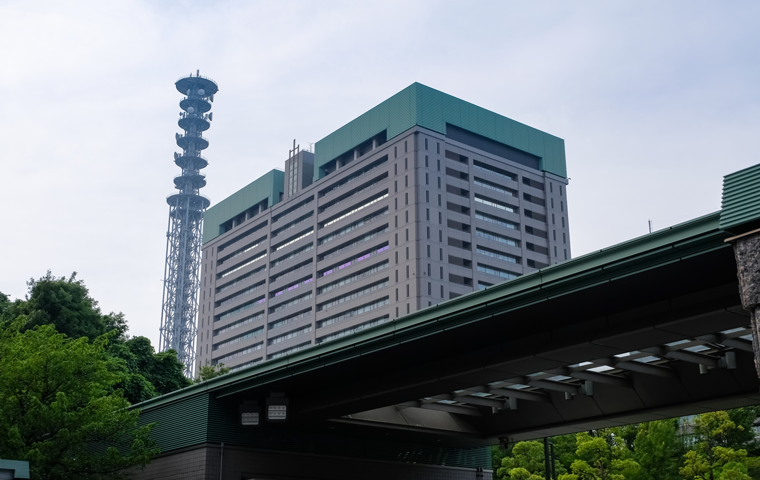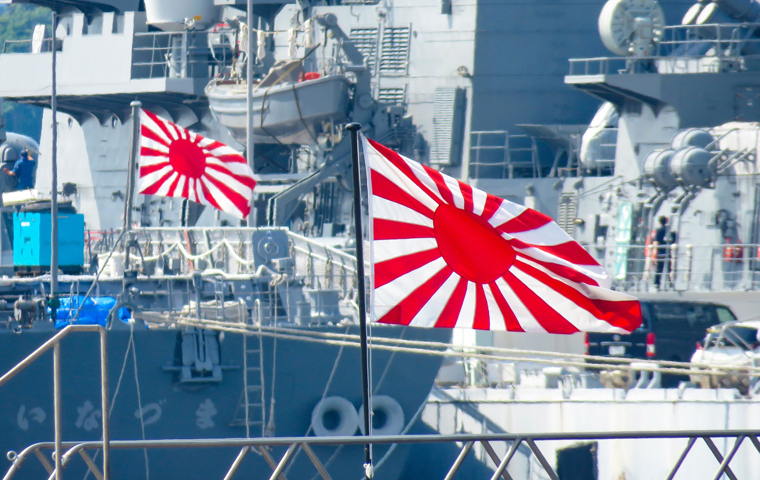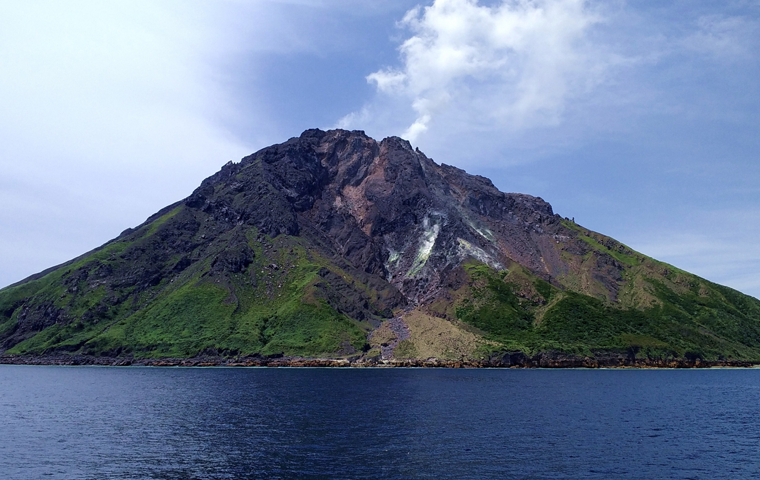Debate on Introducing Nuclear-Powered Submarines: A Historic Turning Point for Japan’s Defense Policy?
Related Articles
Defense Minister Touches a Once-Taboo Topic: A Carefully Prepared “Predetermined Course”

As November 2025 began, Defense Minister Shinjiro Koizumi spoke about the need for Japan to introduce nuclear-powered submarines (hereafter, “nuclear subs”). In a country that is the world’s only atomic-bomb victim and where public opinion is highly sensitive to the military use of nuclear technology, his remarks ventured into an area long treated as taboo in Japan’s postwar defense policy, sending ripples at home and abroad. Yet this is not merely a personal view or a political gaffe. It should be seen as the public phase of a carefully prepared “predetermined course,” months in the making, marking an inflection point in Japan’s security strategy.
This development is anything but sudden. As early as the October 22, 2025 press conference, Minister Koizumi had already stated that “no options will be ruled out, including nuclear power” for submarine propulsion. His remarks reflect the contents of a policy agreement reached between the Liberal Democratic Party led by Prime Minister Sanae Takaichi and coalition partner Nippon Ishin (Japan Innovation Party). At the time of forming the coalition, the two parties set as a policy objective the acquisition of submarines equipped with vertical launch systems (VLS) powered by “next-generation propulsion.” Experts note that the phrase “next-generation propulsion” functions as a euphemism—chosen out of sensitivity to domestic opinion—that, in practice, points to “nuclear power.”
Behind this political accord lies meticulous intellectual groundwork by the bureaucracy and business community. In September 2025, an expert panel on “fundamentally strengthening Japan’s defense capabilities,” established by the Ministry of Defense and chaired by former Keidanren chairman Sadayuki Sakakibara, submitted recommendations to the government. That report serves as the blueprint for the current policy shift. It explicitly calls for equipping submarines with VLS capable of launching long-range missiles and for enabling “long-distance and long-duration movement and submergence” by “utilizing next-generation propulsion unconstrained by conventional precedents.” From “intellectual groundwork by the expert panel,” to “political agreement by the coalition,” and “stepwise references by the responsible minister,” this sequence reflects Japan’s traditional, bureaucratic policy-making process in action. Minister Koizumi’s recent comments were not the “beginning” of a debate but the public unveiling of conclusions forged out of view.
The “Korea Shock” Geopolitical Backdrop: East Asia’s Dominoes and U.S. Strategy
Why did this ostensibly “predetermined” debate accelerate so rapidly in the fall of 2025? One of the chief catalysts was a geopolitical jolt from abroad—the so-called “Korea Shock.” In late October 2025, it was reported that U.S. President Donald Trump, in talks with South Korean President Lee Jae-myung, signaled support and approval for South Korea to build (and ultimately operate) nuclear-powered submarines. This development carried the potential to transform the security landscape in East Asia and was received with “surprise” in Japan.
For Japanese decision-makers, however, that “surprise” also offered a “long-awaited pretext.” Until now, the greatest obstacle to Japan’s acquisition of nuclear subs has been not so much the “threats” posed by China or North Korea as the strength of domestic opposition. But if South Korea—an ally and a non-nuclear-weapon state—moves toward acquiring nuclear subs with U.S. backing, the calculus changes. The logic that “if Korea has them, Japan cannot choose not to” could provide powerful justification for silencing domestic caution. Indeed, as former Joint Staff Chief Katsutoshi Kawano has noted, North Korea has openly stated its aim to develop nuclear subs; should South Korea’s acquisition become a reality, many expect Japan’s debate to advance inexorably.
These moves in Japan and South Korea must be viewed within the broader framework of U.S. global strategy. The Trump administration has consistently demanded that allies such as Japan and South Korea shoulder more of the defense burden in the Indo-Pacific, while the U.S. military concentrates on homeland defense. Some critics argue that the aforementioned Japanese expert panel’s recommendations—such as lifting defense outlays toward 3.5% of GDP—represent a response to demands from the Trump administration. By permitting and encouraging stronger defense capabilities in Japan and South Korea, Washington seeks to place the front line of deterrence against China in allied hands. This is, however, “managed rearmament.” In South Korea’s case, reports suggest that while Seoul sought domestic design and construction and the supply of enriched uranium, the U.S. conditioned its support on construction within the United States (e.g., at the Philadelphia Navy Yard). That approach would secure U.S. jobs and control over core technologies—signaling that allied military buildup is tolerated only within the bounds of U.S. interests. Japan, which holds enrichment rights under its agreement with the U.S., may enjoy an advantage over South Korea, yet it would still rely on U.S. technical cooperation to develop and operate high-performance submarine reactors—meaning any Japanese shift would unfold within Washington’s parameters.
Three Walls to Clear: Legal, Technical, and Public-Opinion Hurdles
From a minister’s “mention” to actual “implementation,” Japan faces three distinct “walls,” and the bar is exceedingly high.
The first wall is legal. Foreign media often question how nuclear subs align with Japan’s “Three Non-Nuclear Principles” (“not possessing, not producing, and not permitting the introduction” of nuclear weapons). Because propulsion is not a nuclear weapon, the government’s longstanding position is that it does not violate “not possess” or “not produce,” and that “not permit introduction” would depend on interpretation. The more fundamental legal hurdle is the Atomic Energy Basic Act, which strictly limits the research, development, and use of nuclear energy to “peaceful purposes.” Possession of nuclear subs—purely military platforms—could conflict with this provision. If Japan were to proceed, revising domestic law would likely be necessary, yet the Takaichi administration does not command a stable majority in both houses, and fierce opposition from other parties is expected. Moreover, because nuclear subs equipped with VLS could, in terms of capability, be used to strike an adversary’s territory, an unavoidable, foundational debate would arise over whether they constitute “offensive weapons” prohibited under the Constitution and the doctrine of “exclusively defense-oriented policy.”
The second wall is technology and cost. Since the troubled experience with the nuclear-powered test ship Mutsu, Japan’s experience with nuclear-powered vessels has been limited. Cultivating and securing personnel with the specialized expertise to operate naval reactors is no simple task. Building and maintaining nuclear subs also require “enormous funding,” which would dovetail with further increases to defense spending—already headed toward 2% of GDP—and with tax debates to finance it, potentially burdening the public. There is also a technical dilemma. Japan currently operates conventionally powered submarines with lithium-ion batteries boasting world-class quieting. Some experts argue that, given Japan’s doctrine (stealthy operations in relatively shallow, constrained waters), these submarines are better suited than nuclear subs, which are more readily detectable due to thermal signatures. Acquiring nuclear subs would mean forgoing this “world-class” technological edge in favor of a different strategy—extended blue-water deployments—a weighty decision.
The third wall is public opinion. As the only nation to have suffered atomic bombings, Japan harbors deep-seated sensitivities toward nuclear matters. Domestic opinion is divided, and the process of securing local acceptance for homeports and maintenance hubs for nuclear subs would be arduous. The Japanese Communist Party and some media outlets denounce such moves as “massive rearmament under the three 2022 security documents,” and “contrary to the ideals of a peace state.”
Japan’s New Course: A Shift in “Exclusively Defense-Oriented” Policy and Implications for the Indo-Pacific

The debate symbolized by Minister Koizumi’s remarks on introducing nuclear subs goes far beyond the tactical issues of “adding a new weapon” or “changing propulsion.” It carries the potential to transform Japan’s national security strategy at a fundamental level. At the core is the expert panel’s emphasis on equipping submarines with VLS.
The true aim of introducing nuclear subs can be seen as acquiring a “strategic asset” capable of covert deployment—platforms that, leveraging near-unlimited endurance, could launch “long-range missiles” from undetected positions at sea. This could amount to a concrete embodiment, in its most survivable and thus most deterrent form (and therefore most threatening to adversaries), of the “counterstrike capability” Japan declared in its three security documents adopted in 2022. Maintaining a standing capability to strike directly at an adversary’s homeland would signal a significant shift in the “exclusively defense-oriented” posture Japan has adhered to for over 70 years.
The 2022 decision to acquire “counterstrike capability” was still a doctrinal change on paper—one that a future government might revise. By contrast, investing in the “hardware” of nuclear submarines—requiring more than a decade to build and colossal funding—could, some argue, effectively lock in that doctrine over the long term, narrowing future administrations’ policy options.
Minister Koizumi’s remarks can thus be read as a signal that Japan is moving beyond a purely “passive shield” under the U.S.–Japan alliance and entering a phase of serious debate over possessing its own “active underwater deterrent (a submerged spear).” While some expect this to “reinforce” the U.S. Indo-Pacific strategy, others warn it could “heighten military tensions—especially with China—and increase the risk of war,” opening a Pandora’s box of dangerous arms racing. Whether this debate ultimately brings regional stability or ushers in uncontrollable instability is a question whose answer the future of the Indo-Pacific will reveal.



